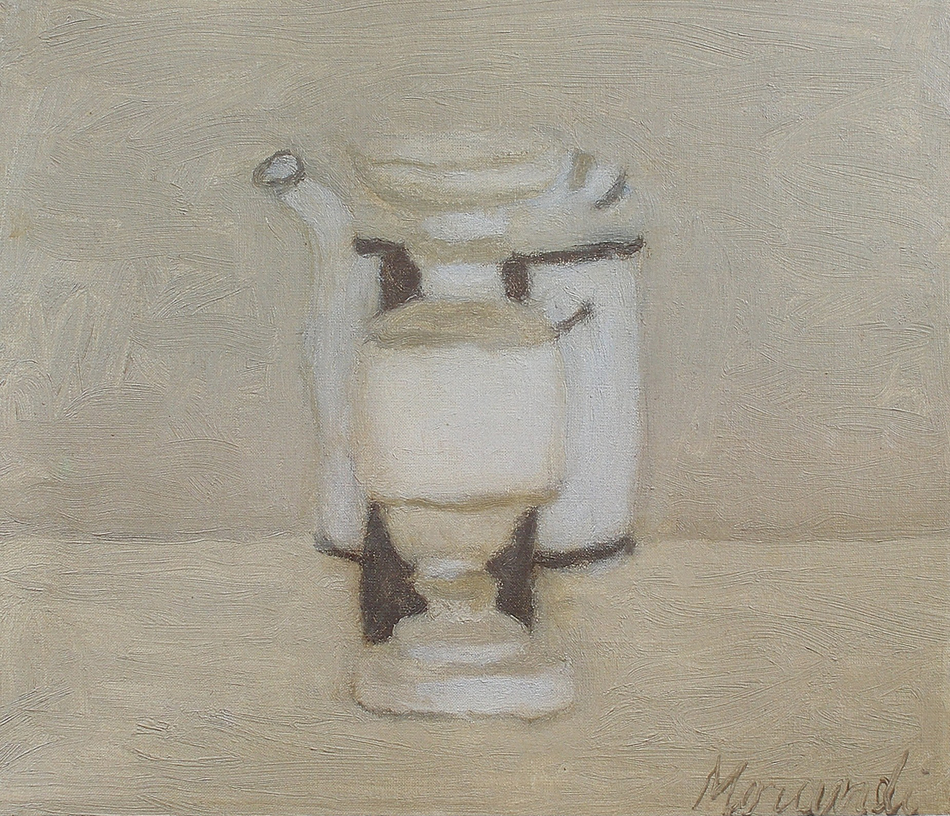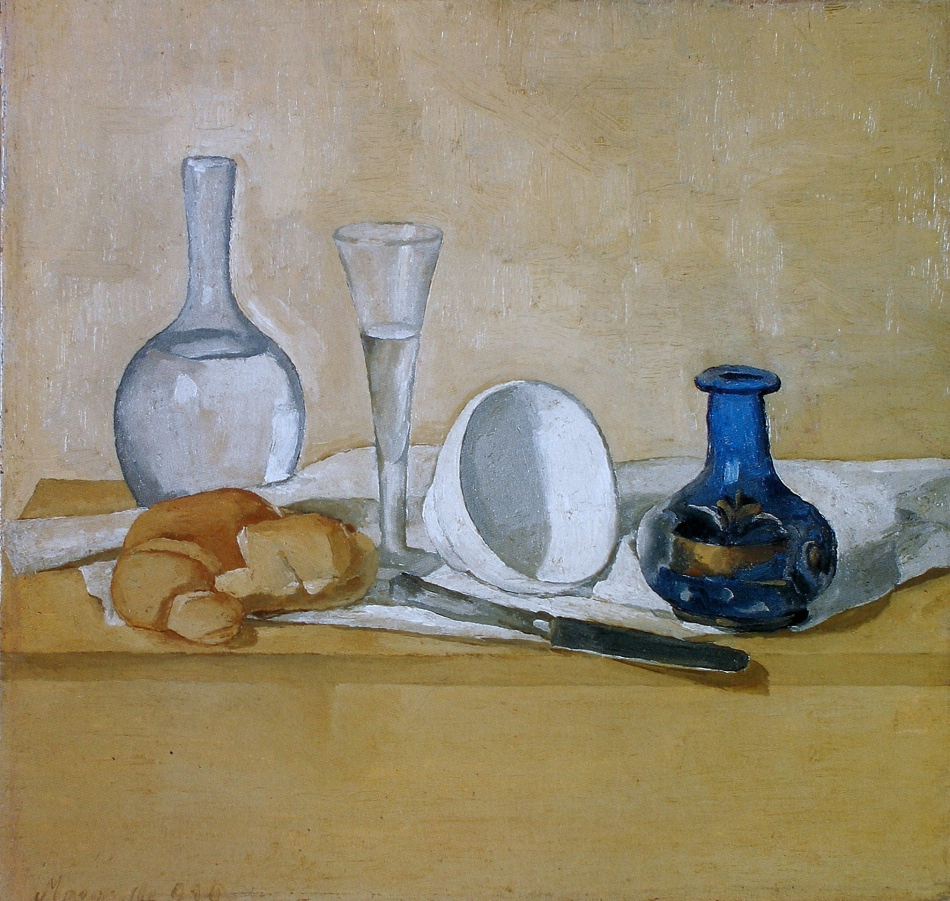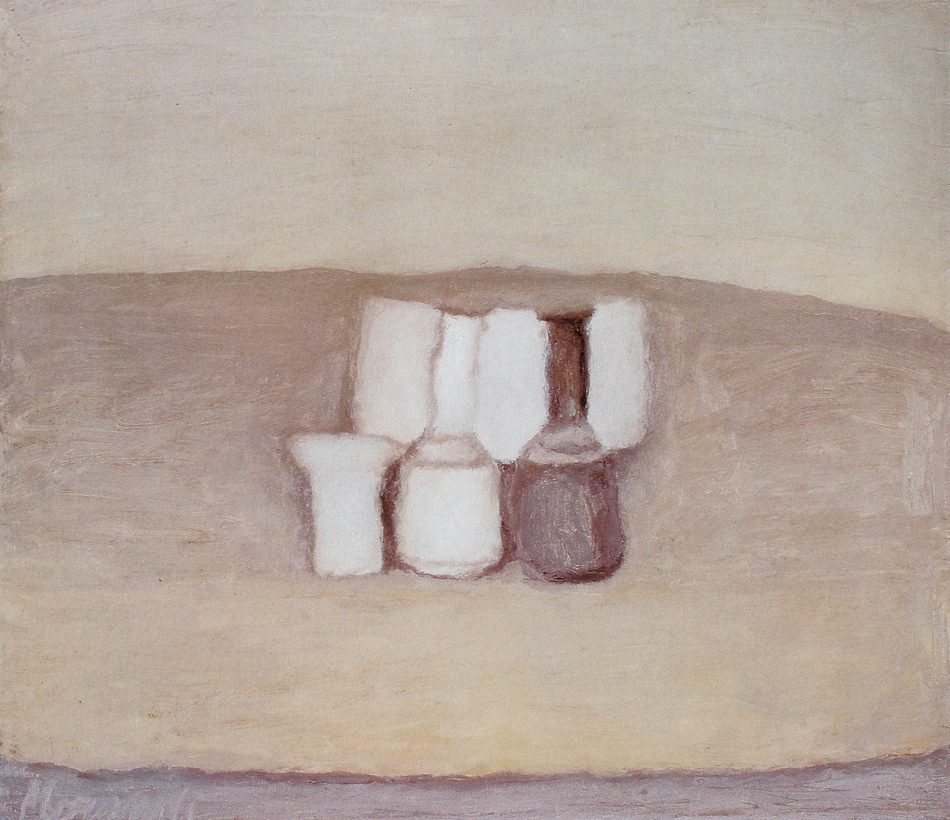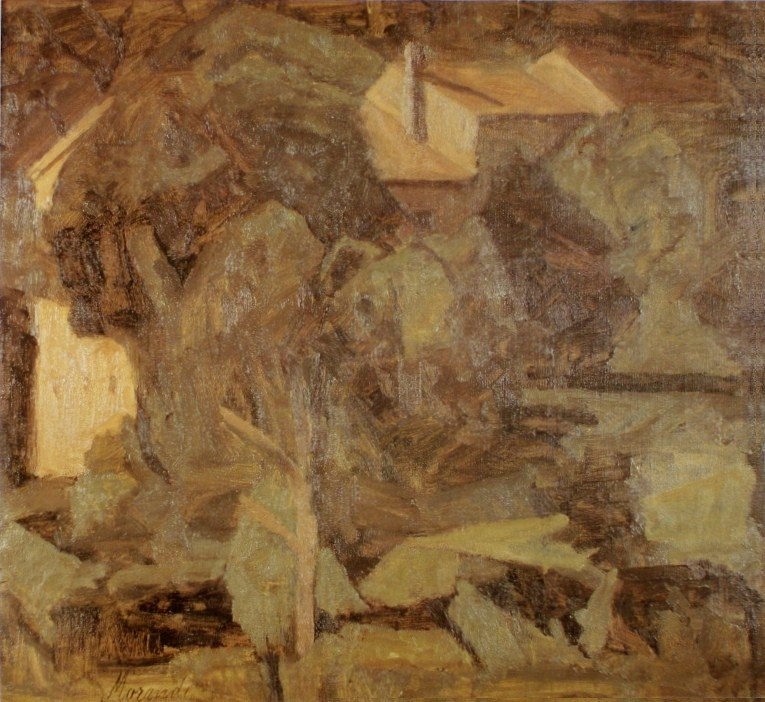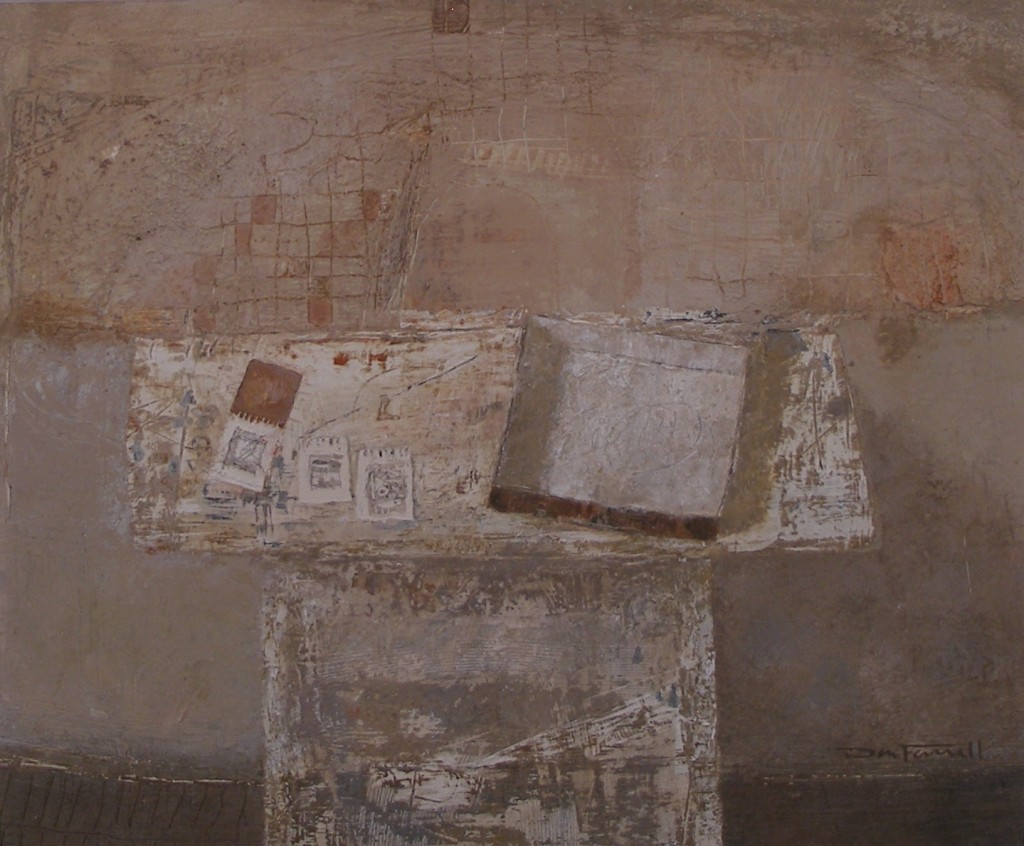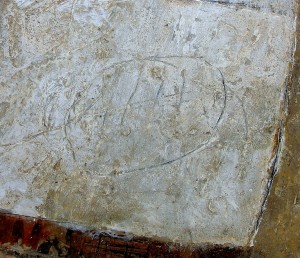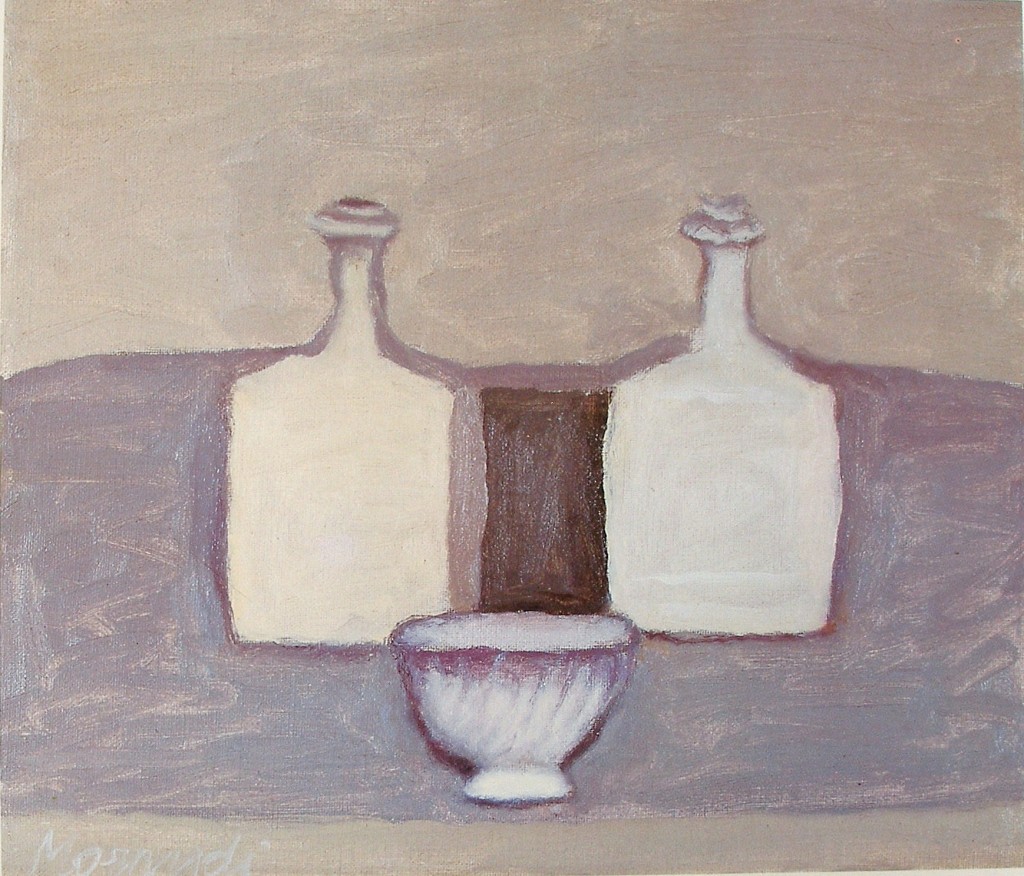Morandi’s contemplative paintings speak to me and I quite often find myself visiting them for the appreciation of his mastery of the reductive process.
In this Still Life he arranged three items directly in front of each other creating a beautiful arrangement of shapes and lines. How he integrated the three with the table and background is absolutely gorgeous.
I love the elegant structure of the shapes, especially the relationship of the top of the spout with the rhythmic movement of the three marks at the right. The horizontal dark line holds them beautifully. (see detail image) I hope you can feel the relationships. 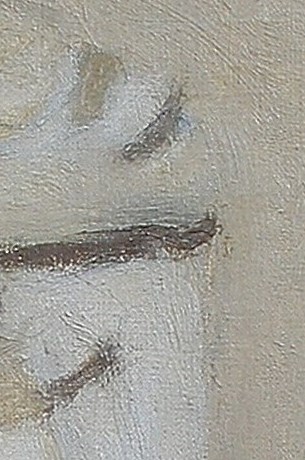
Two of the marks (above the dark line) and the top of the goblet seem to float, connecting our gaze to that sensitive horizontal shadow in the goblet’s top, and leading us to the oval top of the spout. We are then gently brought down to the wonderful dark structure. I mustn’t neglect another sensitive movement, leading our eye down the spout to the bottom edge of the ochre shape on the goblet. This in turn takes us to that magnificent small curved mark engaging us with the movements above.
The top of the goblet seems to be floating, energizing the painting brilliantly. Reducing the subject matter to an arrangement of shapes supports this consideration masterfully. The blending or integration of the objects with the background and table is visual poetry at it’s best.
Note how we seem to be both level with the goblet and slightly above it at the same time. I’m sure this is an homage to Cézanne.
The painting is an exquisite arrangement of shapes and lines revealing a level of sophistication and visual poetry I admire greatly.

